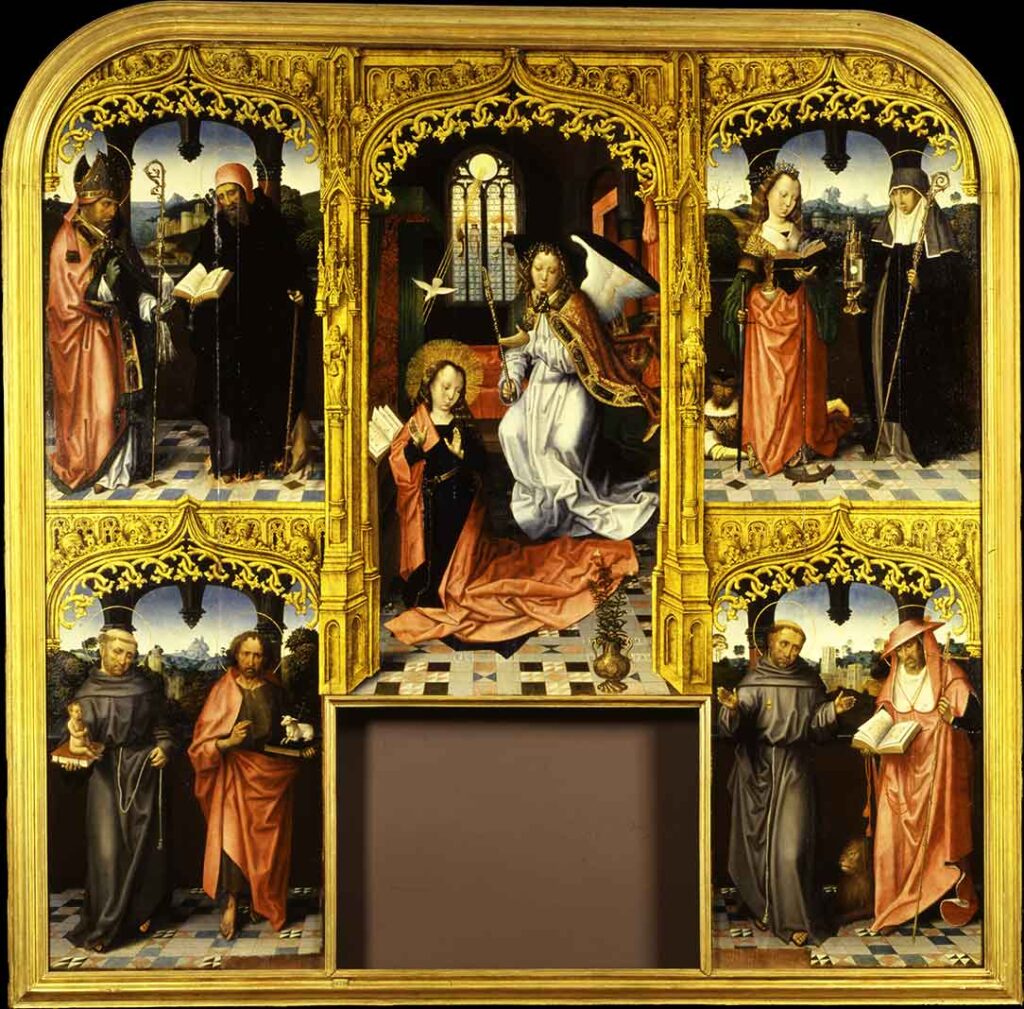Annunciation with Saints Lazarus and Anthony Abbot, Catherine of Alexandria and Clare, Anthony of Padua and John the Baptist, Francis and Jerome
Maestro di san Giovanni Evangelista , 1490 - 1500
Description

This altar painting is made up of five panels divided by a trompe l’oeil painted frame; the empty rectangle, at the bottom, was probably meant to hold the tabernacle. This is the only polyptych in the Museum’s collections and was acquired by Gian Giacomo Poldi Pezzoli before 1857. The Annunciation, the central scene, takes place in a room where Mary is surprised by the Angel as she is reading.
Rays of divine light and the dove, symbol of the Holy Ghost, enter the room through the stained glass window at the far end. The saints are all standing, one next to the other, under a loggia that opens out onto a landscape. The way the space has been portrayed, the detailing of the interiors, the attention to the landscape and the type of figures all show the quality of the work and its influence from Dutch painting.
The attribution to the Master of San Giovanni Evangelista is still uncertain; this is the conventional name of an anonymous painter of panels with stories of the saint, today in Palazzo Bianco in Genoa.
Data Sheet
Author
Master of Saint John the Evangelist
Date
1490 - 1500
Material and technique
Tempera on panel
Measures
234 cm x 223 cm
Acquisition
Gian Giacomo Poldi Pezzoli bequest, 1879
Inventory number
1129
location
Black Room
The Black Room is one of the Museum’s historic rooms, originally the living room of Gian Giacomo Poldi Pezzoli’s apartment. Inspired by the Northern Renaissance style, evoked by the large Flemish polyptych displayed on the wall, it continued to be called Sala Nera despite the destruction of the very fine ebony panelling. Fortunately, the furniture and doors, designed by Giuseppe Bertini and made by the team of artisans Giuseppe Speluzzi, Luigi Barzaghi and Pietro Zaneletti, survived the bombing.
collection
Paintings
The Museum hosts over 300 paintings. Among them, many Italian works from the Renaissance: masterpieces from Tuscany (Botticelli, Piero della Francesca, Pollaiuolo), Lombardy (Luini, Boltraffio, Solario) and Veneto (Bellini, Mantegna). Important is also the group of 18th century Italian painting (Guardi, Canaletto, Tiepolo, Fra Galgario). In the collection, there are mainly portraits and small size paintings.
